IndiaWilds Newsletter Vol. 10 Issue X
ISSN 2394 – 6946
Save Ganga: National River of India
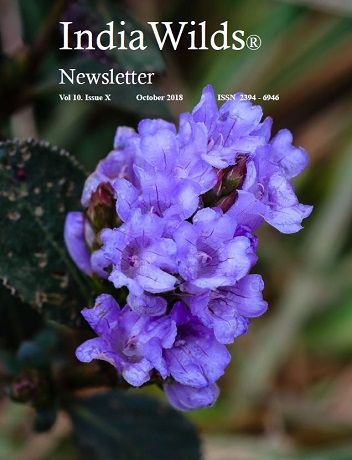
IndiaWilds Newsletter-October-2018 PDF
Ganga or Ganges as it is known is considered holy by millions of Indians since time immemorial. Considered to have descended from heaven, she is revered by people and her waters and shores have been the lifeline of many civilisations. After Alexander won his hard fought victory over Puru – a battle which is even today studied in military schools for the battle strategies employed – his army rebelled and refused to move ahead hearing stories of the great river Ganga many miles wide and stories of large armies of other kings waiting beyond the ocean like river.
Today this holy river Ganga is a pale shadow of her former self. Many dams and hydropower projects in Ganga and its tributaries have throttled her flow and a once perennial river has even become seasonal in some places. Even water is provided in Haridwar via a pipeline for the pilgrims to continue with their rituals.
Ganga today is a toxic mess with industrial effluents being dumped into it with the connivance of corrupt officials of Pollution Control board and other Government agencies. Its waters have huge amount of E. coli and other bacteria due to the unrestrained dumping of untreated human fecal matter and other wastes into the waters. Ganga water, which was taken far and wide by pilgrims, is now so polluted that it can cause skin disease. The massive deforestation in the hills and from the forests in its banks results in huge amounts of soil and mud being washed into the Ganga further increasing the amount of suspended particles in her waters.
There have been a group of seers who have been fasting to save Ganga from this humiliation of forced conversion into large stinking gutter and to make it flow uninterrupted (avilal dhara) and become clean (Nirmal) once again.
The 2014 Lok Sabha election campaign had raised their hopes as the then contender for the PM post, Shri Narendra Modi had time and again raised the matter of the cleaning and restoring the lost glory of the river Ganga. This had raised the hopes of people who wanted effective action to save the Ganga and hence got their support.
Now one more Swami has died after fasting for 111 days demanding action to Save Ganga. Prof. GD Agarwal who was known as Swami Gyana Swaroop Sanand had written three letters to the Prime Minister Narendra Modi but the Prime Minister decided neither to respond to his letters nor to act to save Ganga. In his last letter Swami Sanand (Prof. GD Agarwal) had demanded that the draft bill prepared by the Ganga Mahasabha in 2012 be introduced in the Parliament and discussed. If not then at least the Chapter 1 from Article 1 to Article 9 be passed as an Ordinance. As expected, there was no response to his demands for dismantling the dams and hydropower projects to allow Ganga to flow uninterrupted and to make it clean. The only response from the Government was to forcibly take him to hospital and feed through intravenous methods, which resulted in heart attack and death. After his self-sacrifice, it is important to understand Swami Sanand’s demands and see how those can be achieved. So we look into the immediate steps that he demanded via ordinance.
National River vis-à-vis commercialisation:
He had demanded that there shall be an Act called National River Ganga Ji (Conservation and Management) Act (NRGA). Under this act Ganga was to be formally declared as a National Symbol and as The National River of India.

River Ganga
The Cl. 2 (a) (b) and 2(c) of Chapter 1 of the Ganga Mahasabha draft which Swami Sanand wanted to be passed as an ordinance, defines the length of the river, the stream bed and flood-lines. “The National River Ganga Ji shall include the entire lengths of the three main streams of Alaknanda, Mandakini and Bhagirathi (the tri-umvarite giving the name TRIPATHA to Ganga Ji) from their originating glaciers up to their confluence at Rudraprayag /Devprayag as also the main stem from Devprayag to Ganga Sagar.
(b) For the purposes of this Act, the term stream shall include the entire width of the stream-bed as also all land in the flood – plain and up to 1000 m or above across, on both sides of the highest observed and recorded flood lines. All the land as defined above and everything, lying below or above such lands (minerals, materials, vegetation, buildings, structures etc) whether permanent, transient or mobile, as also all activities there – in, shall be covered.
(c) Areas of up to 15km from the highest observed and recorded flood-lines of the streams of Cl 2(a), but not lying within the areas covered in Cl 2(b), shall be termed “buffer-areas” of the National River, and be subject to provisions of Cl 5 and such other provisions for “buffer areas” as may be made under this Act.”
Given that the Government in Uttarakhand is well known to favour the real-estate mafia, it would have been inconvenient and agreeing to the above clauses would have been like scoring a self-goal.
Following the 2013 landslides in Uttarakhand there was a massive focus on the constructions in the flood-plains of the Ganga river system and finally the CRZ notification was issued. In many forests and National Parks, the ESZ (Eco-sensitive zone) notification is modified to suit the needs of builders and the breadth of the ESZ is curtailed to 100-200 meters. So asking for defining the stream as 1000 m above or across on both sides of the highest observed and recorded flood lines would have given the politicians panic attack. And declaring areas upto 15Km as “buffer areas” is naturally not acceptable to politicians who don’t care for environment and our natural heritage.
The demand also includes no commercialisation of the Cl.2(b) which means no commercialisation of the stream bed and flood-plains. Now the river Ganga is under the charge of Mr. Nitin Gadkari, who is under a commercialisation spree. Under the guise of creating waterways in Ganga barrages are to be constructed. Constructing barrages to throttle the river is directly against the demand of Aviral dhara or uninterrupted flow regime of the river. No wonder the PM Modi never responded to the letters of Swami Gyan Swaroop Sanand (Prof. GD Agarwal).
Prohibited Activities:
The Cl.4 of draft by the Ganga Mahasabha (which Swami Sanand wanted to be notified via ordinance) defines list of prohibited activities.
“The under-listed activities shall be totally prohibited in the areas covered under Cl 2(b):
(A) Discharge of any untreated or treated sewage or industrial effluents.
(B) Disposal by any means including incineration or burning of any kind of solid wastes (not including ritual cremations).

Ganga Aarti
(C) Setting up production/industrial units of any type involving disposal of any pollutants, solid, liquid or gaseous.
(D) Deforestation or setting up any wood based industry.
(E) Stone quarrying, crushing, cutting, finishing or processing.
(F) Units involving slaughtering/processing of fish, animals or any living species/matter.
(G) All types of mining (minor or major materials) except (a) for domestic needs of local residents (b) totaling up to 500 tones/ year in any one km long stream stretch by permission of NRGA and (d) any amounts for the purpose of stream-bed conservation with permission of NRGA. This will not be applicable in Zones determined for Kumbh, Ardh-Kumbh, Magh Mela and other religious congregation.
(H) Any structure that is likely to disturb the Aviral and Nirmal flow characteristics of Ganga Ji including river- front development structures.
(I) Abstraction of waters for industrial, municipal, irrigation or any other purposes except (a) less than totaling up to 0.1 MLD for local use in any one km stretch (b) totaling up to 1.0 MLD in any one km stretch with permission of relevant SGB (c) totaling up to 100 MLD in any one km stretch for other uses and up to 25% of the normal monthly flow for agriculture with permission of NRGA.
(J) Any defiling, de-meaning or polluting activities that shall go against the sacred National River Status (e.g. Casino, Bar, Recreational Activities etc).
(K) No Chemical fertilizers, pesticides, weedicides and other hazardous substances shall be used.”
The Hon’ble Supreme Court while hearing petitions on Ganga has observed that corrupt State Pollution Control Board officials have ensured that industrial effluents continue to be released into the Ganga. There is collusion by these officials with the local administration and ministers. The money flow directly enriches the political party in power. So demand for setting up Effluent treatment plants and monitoring those to ensure no release of untreated industrial effluents and human wastes is not welcome news to politicians.
Stone quarrying is going uninhibited in many states despite Supreme Court orders. This is again due to the collusion of mafia with officials of local administration and ministers/political party in power. Wood cutting, mining are the other areas of illegal nexus. So it is easier to turn a blind eye to these demands.
The Prime Minister soon after assuming charge in 2014 had talked about Organic farming in the entire North east of India. So it may be surprising to some as to why Mr Narendra Modi didn’t care about banning Chemical fertilizers, pesticides, weedicides and other such hazardous substances being used in and around the Ganga river system. The water runoff from the fields where chemical fertilizers and pesticides/weedicides etc are used leach into the ground as well as pollute the freshwater sources like streams and rivers. It is absorbed by the plants and trees and fishes and bio-accumulates in all living beings including humans.
It would be pertinent to mention that the Government every year provides massive subsidies for chemical fertilizers and pesticides. In the Union Budget 2018 the Government has provisioned Rs. 70,079.85 crores. So the chemical fertilizer and pesticide lobby is very powerful in India. Naturally, this is not something a politician would like to upset.
No Development on Hill Slopes:
The demand also included not to develop the hill slopes. Under Cl. 5(A) is mentioned
“(a) No new development on existing steep (over 100) slopes or even milder slopes with high degree of erosion potential. (Actually protection measures should be initiated in such cases).
(b) No new development in areas falling in fault or hazard zones, or along spring lines, and first order streams, as per best available scientific evidence. where such activities may be allowed, should be those clearly indicated in the Zonal Master Plans (prepared as per chapter 4) and still clearance for specific works and details shall be needed form the Zonal Monitoring and Implementation Committee on recommendation by the Sectional Monitoring and Implementation Committee constituted as per Chapter 3.”
Uttarakhand is undergoing a massive change with lot of construction on the hill slopes. Virtually all the vegetation in hills surrounding human habitations have vanished. The construction of hydropower projects have led to inflow of workers from neighbouring states as well as Nepal and many of them stay back after the project is over. These people take up residence in the hills, cutting off the vegetation. The increase in tourism is also taking a toll as hotels and restaurants are constructed. The real-estate lobby are completely against any move to ban or streamline construction in the hills. So it is natural that this demand to stop construction on hill slopes is not agreeable to the political party as well as their Government.
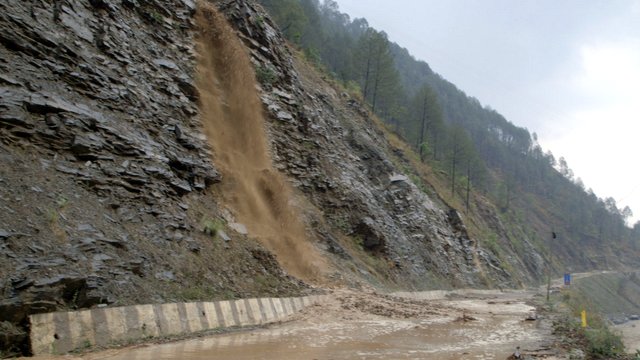
Landslides have been the norm due to climate change
Hill Roads:
Cl. 5 (B) of the Ganga Mahasabha draft demanded that streamlining and regulation of hill roads construction as per master plan and also called for clear guidelines even for un-tarred tracks, mule tracks and parikrama paths. It should be noted that due to the massive number of pilgrim and tourist arrivals the environment impact of these roads is huge.
“(a) The Zonal Master Plans (as per Chapter 4) shall not only provide what roads, where and how, may be built within the stream area and in buffer area, but shall also lay clear guide-lines for such roads (including un-tarred tracks, mule-tracks, Parikrama Paths etc) to be complied in any future constructions.
(b) In all cases, alignments should be selected to minimize loss of vegetal cover; crossing areas prone to erosion and also balancing cut and fill to the extent possible.
(c) The debris / extra cut materials should be disposed in an eco-friendly and aesthetic to view manner.
(d) Adequate road-side drains should always be provided, kept free from blockage and should have proper disposal.
(e) Exposed hill-slopes and other instabilities caused by road-construction should be adequately treated by bio-engineering or other appropriate techniques. All new proposals and details shall need clearance from Zonal Monitoring and Implementation Committee constituted as per Chapter 3.”
The Narendra Modi Government is absolutely against any restriction on hill roads. The PM had even announced widening of roads linking Kedarnath, Badrinath, Gangotri and Yamunotri and had tried to bypass the need for Environment Impact Assessment by breaking down the project into components of each below 100 crores. The NGT is now blatantly following the dictats of the Union Government and had even allowed this road project (popularly known as chardham project). Fortunately the Hon’ble Supreme Court has stayed it.
So it is quiet clear that the Union Government as well as the Uttarakhand Government is not going to accept the demand for regulating hill roads. However, it would be pertinent to mention that this draft was done in 2012 and in 2013 June massive landslides had hit Uttarakhand. Atleast 10,000 people were expected to have died in the tragedy. We were fortunate to have left a couple of days before the landslides in Uttarakhand and we had found exposed hill-slopes and cracked rocks on the slopes waiting to hurtle down. (Wrath of Rudra, IndiaWilds June 2013, http://www.indiawilds.com/diary/indiawilds-newsletter-vol-5-issue-vi/ )
Our road builders often cut the mountain vertically. A gentler slope would ensure that the water doesn’t suddenly fall on the road and wash it away. The gentle slope will also ensure that grass and bushes will come up on the slopes. In Malaysia one can find wire netting on the slopes to stabilize it and then grass planted on it. Channels for passage of rain water is also clearly constructed so that rain water is immediately drained and doesn’t assume the form of a raging powerful mini-landslides which quickly gather strength.
Natural water bodies & Ground water extraction:
The Ganga Mahasabha document also talks about preserving natural water bodies like springs, lakes, ponds etc and permitting ground water extraction only for domestic use and agriculture. This too is anathema to the Government which allows industrial use as well as turns a blind eye to the reclamation of natural water bodies.
Zonal Master Plans:
The Ganga Mahasabha document also divides Ganga into “following Zones (A) Rivers Bhagirathi, Alaknanda and Mandakini (B) Ganga Ji from Dev Prayag to Uttarakhand Border (C) Uttarakhand border to Narora (D) Narora to Prayag (E) Prayag to Uttar Pradesh – Bihar border (F) Bihar (G) Jharkhand (H) West Bengal.” It asks for engaging appropriate agency for creation of Zonal master plans. These master plans would have directly gone against the Ganga waterways plan of Nitin Gadkari led ministry. So it was very clear that the Prime Minister Mr. Narendra Modi didn’t respond to the three letters by Swami Gyan Swaroop Sanand (Prof. GD Agarwal) allowed his fast onto death to continue resulting in the death of Swami Sanand.
Ganga is intricately linked with the psyche of all Indians. It is also widely believed that Ganga waters have very special and unique features including self cleaning and health promoting properties. Ganga is considered holy. So it comes as a huge surprise as well as disappointment that people in the name of money are ready to desecrate their Gods and cultural icons and the Government prefers to turn a blind eye and in some cases complicit in those sinister designs. If people cannot apply enough pressure on their elected representatives to save Ganga from corrupt industrialists, politicians, real estate mafia then there is no hope for saving other rivers and wilderness areas in this country.
A Visit to Eravikulam: Neelakurinji landscape
A visit to Eravikulam: Neelakurinji landscape
Conservation News:
Seven elephants electrocuted in Odisha:
In a shocking incident, seven elephants have been electrocuted to death in Kamalanga village in Dhenkanal in Odisha. These elephants were part of a 13 member herd which came in contact with a 11-kv line. The electricity distribution in the area is done by Central Electricity Supply Utility (CESU) and they have abdicated their responsibility in maintaining these power lines. They are not making capital investments so power lines are sagging in many places. This incident occurred on 26th October and was noticed the next day morning when people saw the carcasses lying in the ditch.
Following this incident there was a hue and cry and the Odisha Chief Minister Shri Naveen Pattnaik was forced to order a crime branch investigation into the incident to find out if there is any criminal negligence. Meanwhile the Odisha forest department has suspended three junior level staff including the Dhenkanal Range officer. The junior manager of CESU Meramundali has been suspended.
The Odisha PCCF (Principal Chief Conservator of Forests) have issued a press release highlighting that the Divisional Forest Officer had written to the electric utility regarding the sagging lines. “In the coordination meeting held under the chairmanship of Additional Chief Secretary, Forest & Environment Department on March 29, 2018, it was decided that the electric transmission line going through the elephant movement area should be invariably insulated in new cases and for older transmission line, the replacement should be phase wise.”
This is not the first time such an incident has happened in Odisha. Last month on 18th September one elephant was electrocuted in Uparajhara village in Balangir. On September 5th two elephants were electrocuted in Badapokhari in Dalijoda forest range in jajpur district. On June 8th one elephant was electrocuted by a 11KV line in Betnoti.
There is huge man-elephant conflict in Odisha. Elephants are losing their lives and people are also dying. The elephant corridors have not been notified by Government. There is land grabbing and concreatisation as well as illegal mining in certain areas. So elephants have no where to go. They are unwanted and each forest range wants to push the elephants away to the next so that they don’t face the ire of the local people.
According to MoEF&CC, In India 655 elephant deaths have been reported between 2009 to 2017. According to one estimate, Odisha itself has lost 175 elephants in 18 years. It is an irony that on one hand we pray to the elephant God and on the other hand elephants are dying due to speeding trains, road accidents, electrocution as well as poaching. Their habitat has shrunk and they have no where to go. Their gene pool has been fragmented. Their traditional migratory corridors broken and mostly cutoff. They are fighting their last battle for survival.
Strengthening Forest Fire Management will help India meet its Long-term Climate Change Goal
Every year, forest fires occur in around half of the country’s 647 districts and in nearly all the states. It is estimated that in 2014 alone, nearly 49,000 sq.km of forests – an area larger than the size of Haryana – were burned (Reddy et al. 2017b). The forest fires have distinct regional patterns. Just 20 districts, representing 3 percent of the India’s land area and 16 percent of the country’s forest cover in 2000, accounted for 44 percent of all forest fire detections from 2003 to 2016. Twenty districts (not necessarily the same ones) also accounted for 48 percent of the total fire-affected area between 2003 to 2016, despite having just 12 percent of the nation’s forest cover in 2000 and 7 percent of its land area. While states in the Northeast account for the greatest share of fire detections, the largest area affected by fire is in the Central region. The forest fires are caused by a combination of natural and social factors.
These facts came to light from a joint report by MoEF&CC (Ministry of Environment, Forests and Climate Change) and World Bank titled “Strengthening Forest Fire Management in India”. The report discusses policies on forest fire prevention and management and underscores the need to put more emphasis on better fire prevention practices and a well-equipped and trained workforce to fight fires. The report adds that there is an urgent need to fill vacancies for field staff, particularly in fire-prone areas, and to make adequate and reliable funding available, the report adds.
Some of the recommendations include – developing a National Forest Fire Prevention Management Plan as an open, consultative and a time-bound process, institute standard management practices, adapt technology to local conditions, as well as scale up the best practices and increase engagement with local communities to ensure that big fire is used in a responsible way and at the same time, give communities a greater say in decision-making process.
The Report suggests that the National FFPM Action Plan should delineate the roles and responsibilities of the MoEFCC, state forest departments, communities and disaster agencies. Lastly, there is a need to support forest fire management through improved data, and research to fill critical knowledge gaps. A national forest fire information database, bringing together satellite-based remote sensing data, and field-reported data, will be instrumental for assessing longer-term trends across states and regions and for planning fire prevention and response. In addition, defining a national research agenda for fire management and provision of funding opportunities for scientific research would help to establish formal cooperation between members of the research community and the forest department.
Speaking at the release of the report “Strengthening Forest Fire Management in India” Union minister for MoEF&CC Dr. Harsh Vardhan strongly emphasized that more and more people will have to be involved to make managing of forest fires into a mass movement. He further said that forest fire management is part of India’s long-term vision for Sustainable Forest Management and affirmed that the recommendations suggested in the report must be implemented effectively.
The Minister stressed that forest fire is one of the causes of emission of carbon dioxide that leads to global warming. Hence this report is timely and will help meet “India’s climate goals defined under the Nationally Determined Contribution (NDCs) set under the Paris Agreement”. He advocated the institution of recognition or awards to infuse a healthy competition among state forest departments.
Speaking on the occasion, Country Director for India (World Bank) Dr. Junaid Kamal Ahmad said that forest fires are a challenge across many countries and lead to the loss of lives and livelihoods for people directly dependent on forest produce.
It is to be seen how fast the recommendations of the report is going to be implemented and how effective is the implementation. Our Government has a habit of putting reports under cold storage even though hundreds of man hours have been spent in reports.
Link to the report: http://documents.worldbank.org/curated/en/333281529301442991
India and Finland to Cooperate on Environmental issues:
The concerns of rising environmental issues are not limited to any country but pose a serious challenge to the entire Globe. India is one of the emerging economies in the world with vast coastline and rich bio-diversity. Finland’s main environmental issues are air and water pollution, and the preservation of its wildlife. Industrial pollutants from within the country and surrounding countries affect the purity of both the nation’s air and water supplies. It also faces challenges like water pollution and increased demand for natural resources. Both the Countries face many environmental challenges like waste water management, conservation of threatened species, control of air and water pollution and increased demand for natural resources.
In view of the urgency to check: the growing environmental concerns both India and Finland have decided to join hands to establish and promote closer and long term cooperation in the field of environment protection and management of natural resources and bring in the latest technologies and best practices suited towards better environmental protection.
So the Union Cabinet has approved Memorandum of Cooperation between India and Finland on Environmental Cooperation. The Memorandum of Cooperation will enable establishment and promotion of closer and long-term cooperation between the two countries in the field of environment protection and management of natural resources on the basis of equity, reciprocity and mutual benefits, taking into account the applicable laws and legal provisions in each country.
The Memorandum of Cooperation is expected to bring in the latest technologies and best practices suited for bringing about better environment protection, better conservation, and better management of climate change and wildlife protection/conservation.
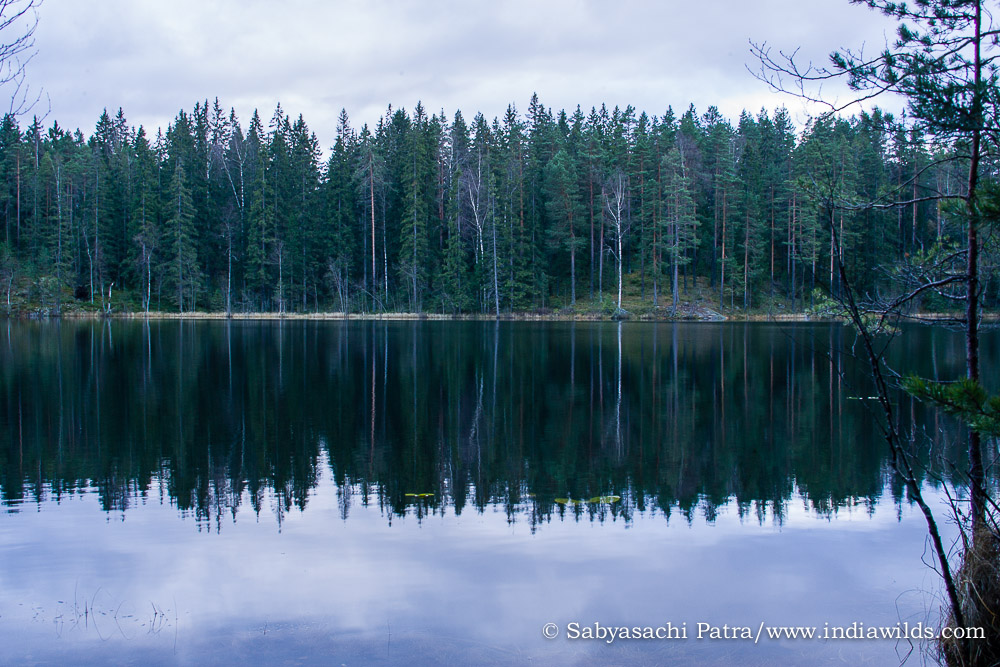
Nuksio National Park – Finland
The areas of cooperation under this Memorandum of Cooperation shall include:
- Air and water pollution prevention and purification, remediation of contaminated soils;
- Waste management including hazardous wastes, and waste-to-energy technologies;
iii) Promotion of circular economy, low-carbon solutions and sustainable management of natural resources including forests.;
- Climate change;
- Environmental and Forest monitoring and data management;
- Conservation of Marine and Coastal Resources;
vii) Integrated water management of Oceanic/Sea Islands; and
viii) Any other areas jointly decided upon.
MoU among BRICS Nations on Environmental Cooperation approved by Union Cabinet:
The Union Cabinet has given its ex-post facto approval for Memorandum of Understanding (MoU) signed among the BRICS Nations on Environmental Cooperation. The MoU was signed during the 10th BRICS Summit in July, 2018 in Johannesburg, South Africa.
The MoU identifies the following stress of cooperation:
- Air quality;
- Water;
- Biodiversity;
- Climate Change;
- Waste Management;
- Implementation of the 2030 Agenda for Sustainable Development and Sustainable Development Goals; and
- Other areas of cooperation as mutually agreed upon by the Participants.
The MoU will enable establishment and promotion of closer and long-term, cooperation between the BRICS countries in the field of environment protection and management of natural resources on the basis of equity, reciprocity and mutual benefits, taking into account the applicable Jaws find legal provisions in each country.
The MoU acknowledges the responsibility of the BRICS nations, an association of the five major economies of the world i.e. Brazil, Russia, India, China and South Africa comprising of more than 40% of the population of the world, towards the protection, preservation and sustainability of the Environment.
The Memorandum of Understanding is expected to bring in the latest technologies and best practices suited for bringing about better environment protection, better conservation, and better management of climate change and wildlife protection/conservation. The MoU shall facilitate exchange of experiences, best practices and technical knowhow through both public and private sectors among the participating BRICS nations and shall contribute to sustainable development, protection and preservation of Environment. The Memorandum of Understanding also provides the possibility to have projects in areas of mutual interest.
Equipment Discussions:
Zeiss announces ZX1 Mirrorless fullframe compact camera
In an interesting move Zeiss has announced development of a mirrorless full frame camera called ZEISS ZX1. The sensor is also developed by Zeiss.
The camera is supposed to be intuitive like a smartphone.
Sensor: 37.4 MP full frame sensor.
Lens: It has a Distagon 35mm f2 T* lens.
Memory: It has 512 GB internal memory to hold approximately 6800 raw still shots or 50,000 jpgs.
Workflow: It has Lightroom CC integrated. So when connected to the web one can directly upload shots to various sites.
Price is yet to be announced. The Zeiss ZX1 camera is to be available sometime early 2019.
With the price of memory falling, I am sure other manufacturers will also take cue and start providing internal memory along with external memory. So that it can provide one layer of safety backup and lot of freedom. The full press release is provided below.
PRESS RELEASE
The Camera Concept for the Creative Flow in Photography
First full-frame camera from ZEISS with first-class image quality and the familiar, intuitive image editing and connectivity of a smartphone.
OBERKOCHEN/Germany, 2018-09-27.
ZEISS ZX1 – That is the name of the newly developed mirrorless full-frame camera from ZEISS that was presented today in Cologne, Germany. Thanks to the ZEISS lens and a sensor developed in-house at ZEISS, the camera delivers first-class image quality combined with an operational concept and user experience that make the photographer’s jobs-to-be-done as intuitive as on a smartphone.
The ZEISS camera concept is just the first step to opening up a new world of possibilities for ambitious photographers – from taking the shot to editing the image and sharing it on the web.
SHOOT. EDIT. SHARE. – Harmonized hardware, software and optics for a seamless creative process
SHOOT: the ZEISS ZX1 features a newly designed, integrated ZEISS Distagon 35 mm f/2 T* lens with autofocus that has been perfectly matched to the 37.4 megapixel full-frame sensor developed in-house at ZEISS. The interplay between the lens and sensor ensures first-class picture quality with that typical ZEISS look.
EDIT: The ZEISS ZX1 enables photographers to professionally process RAW images directly on the camera thanks to fully integrated Adobe Photoshop Lightroom CC. Moreover, the ZEISS ZX1’s unique user interface supports the user’s particular workflow without any interruption – providing direct access to the most frequently used functions via a 4.3″ multi-touch display.
SHARE: when the networked full-frame camera is connected, the user can upload selected images directly to the internet – without the intermediate transfer to memory cards or other external devices.
512 GB of internal memory provide sufficient space for approximately 6,800 RAW files (DNG) or over 50,000 JPGs – more than enough to handle photos, even during a longer trip, and giving the photographer the chance to let their creativity flow. Versatile connectivity options such as Wi-Fi, Bluetooth and USB-C ensure that various peripherals can be connected. Over-the-air software updates keep the camera up to date without requiring a computer connection.
Designed with a passion for detail and a focus on the essentials
The design of the ZEISS ZX1 is characterized by its iconic shape with carefully crafted details. The overall form and reduction to just those elements that are absolutely necessary lay the foundation for an ergonomic camera and ensure easy handling. The symbiosis of hardware and software is exemplified by the newly defined user interface that utilizes the 4.3″ multi-touch display. The slightly bent screen separates the live view from the control elements, making camera operation comfortable and straightforward.
“We know that we exploring new ways and initially addressing a special target group with the ZEISS ZX1. With our concept we are focusing on ambitious, professional creatives who want to produce their photographic experiences quickly and efficiently, and inspire as many people on the Internet as possible. This requires a streamlined workflow in addition to high-end features. This is exactly what the concept of the ZEISS ZX1 offers,” explains Jörg Schmitz, Head of the Consumer Products business group at ZEISS.
ZEISS ZX1 available from early 2019
The ZEISS ZX1 will be available at selected dealers in early 2019. ZEISS will announce the recommended retail price at the start of the official market launch.
Lexar announces 512 GB 633x microSDXC UHS-I card:
Lexar has announced a 512 GB 633x microSDXC UHS-I card which meets the application performance class 2 (A2) requirements from SD associations 6.0 specs. At the moment the card is the world’s largest A2 microSD card on the market. This is a premium memory solution for high end smartphones. So you can now use this card in your iphone and then continuously record video interview or a long scene or play.
A2 allows app-intensive users to experience higher minimum random write speed of 2000 IOPS and minimum read speed of 4000 IOPS*. This ensures blazing speed to run and store apps directly on the A2 memory cards using Android Adoptable storage enabled devices. A2 cards will be identified with the App Performance Class symbol making it easy to recognize and maximize the devices potential.
With 512GB, there will be ample room to store continuous memories. The High-Performance 633x microSD are speed rated at Class 10, and leverage UHS-I technology to deliver a transfer speed up to 100MB/s (633x)**, these high-capacity cards give you the speed and space you need to capture, transfer, and share more adventures on the go.
Longsys which is into NAND flash applications had earlier taken over Lexar brand. This announcement means that Lexar is likely to remain at the forefront of high-performance memory cards, drives and storage space. Its director of Global Marketing, Joel Boquiren said “As smartphones integrate more and more into our busy lives, we’re relying on them to do more than ever. Having the world’s largest A2 microSD card will aptly meet the demands of even the most intense power user with its high-performance and high-storage capacities. We’re proud to be part of the digital revolution in continuing to advance the trusted format”.
The 512GB Lexar High-Performance 633x microSDXC™ UHS-I card is available late-October at MSRP of $299.99 USD.
SPECIFICATIONS
Capacity: 16GB – 512GB
Speed Class
16GB – Class 10, UHS-I (U1)
32GB – Class 10, A1, UHS-I (U1), V10
64GB – Class 10, A1, UHS-I (U3), V30
128GB – Class 10, A1, UHS-I (U3), V30
256GB – Class 10, A1, UHS-I (U3), V30
512GB – Class 10, A2, UHS-I (U3), V30
Performance
16GB – up to 95MB/s read
32GB – up to 95MB/s read
64GB – up to 95MB/s read, up to 45MB/s write
128GB – up to 95MB/s read, up to 45MB/s write
256GB – up to 95MB/s read, up to 45MB/s write
512GB – up to 100MB/s read, up to 70MB/s write
Humidity: 5% to 95%
Natural History
COUNTRY NOTEBOOK: M. Krishnan: ‘Hog-Deer‘ shared By Saktipada Panigrahi
https://www.indiawilds.com/forums/showthread.php?8852-Country-notebook-m-krishnan&p=86304#post86304
Wildlife Photography
Elephant mom in black and white by Sabyasachi Patra
https://www.indiawilds.com/forums/showthread.php?18935
Under the Jamun tree by Shyamala Kumar
https://www.indiawilds.com/forums/showthread.php?18936
Kabini Tiger – lurking behind the bush by Neeraj Prasad
https://www.indiawilds.com/forums/showthread.php?18953
Purple Heron with fish by Samrat Sarkar
https://www.indiawilds.com/forums/showthread.php?18928
Purple rumped sunbird female in Bangalore by Mrudul Godbole
https://www.indiawilds.com/forums/showthread.php?18938
Brown fronted woodpecker by Jitendra Katre
https://www.indiawilds.com/forums/showthread.php?18946
Red whiskered bullbull by Anil Kumar Verma
https://www.indiawilds.com/forums/showthread.php?18947
Eyes that sees all by Prajwal Ullal
https://www.indiawilds.com/forums/showthread.php?18933-The-eyes-that-see-all
This is the 118th Issue of IndiaWilds.
The photo of Neelakurinji (Strobilanthes kunthianus) adorns the cover page of this issue. This beautiful semelparous flowering plant which blooms once in 12 years is losing its range due to hand of man. Anthropogenic pressures have resulted in flowers blooming in only fewer areas than before. We have to leave some of our forests wild and unmanaged so that future generations can not only discover hitherto undiscovered species but also recover and recuperate from the stress of modern lifestyle.
I look forward to your inputs and support in preserving the last tracts of wilderness and wildlife left in our beautiful country and raising awareness about it. For other interesting articles and images check –
http://www.indi
To post in the IndiaWilds forums, you can register free of cost using your Full Name as user id at:
http://www.indiawilds.com/forums/register.php
If you are already a member of IndiaWilds and have forgotten your user id and/or password you can mail to:
administrator@indiawilds.com
If you want to contribute original articles, or for any image enquiries please send a mail to:
administrator@indiawilds.com
Regards,
Sabyasachi Patra
Profile | Contact Us | Facebook | Diary | Equipment reviews | Forums | IndiaWilds You Tube Channel
Please post your views and feedback in the comments below.
- GoPro Hero 12 Black - 6 September,2023
- Leopards: The Last Stand - 2 July,2023
- Drifting in the Waters of Sundarbans - 26 March,2023





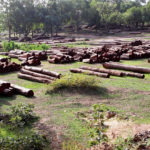



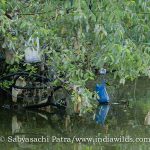





Very nice & important post